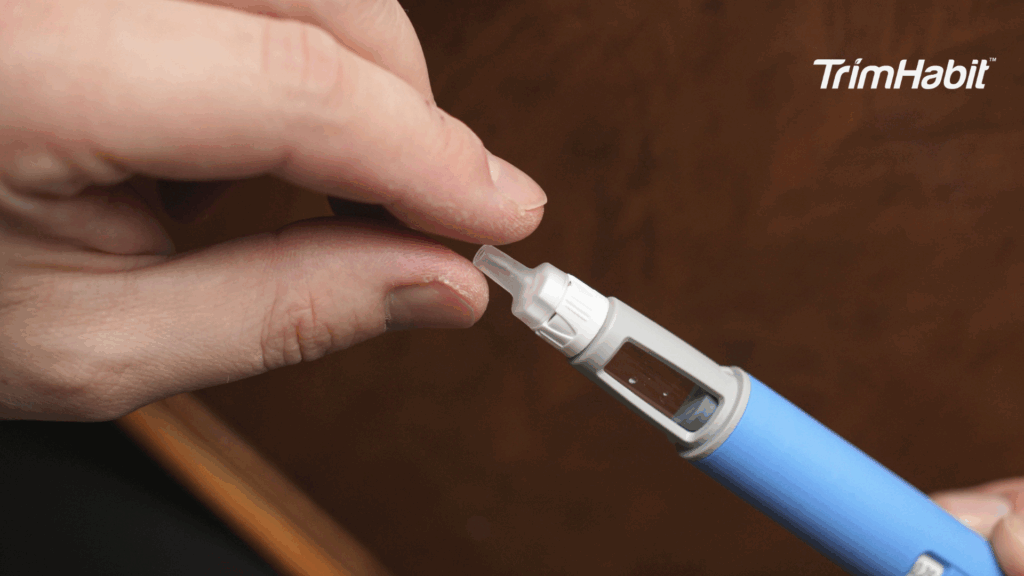Intermittent fasting entails completely or partially abstaining from eating for a defined period of time before eating normally again. Each person’s experience with fasting is unique, and different techniques will suit different people.
For this article, we will discuss how fasting helps with loose skin and how your skin corresponds with the interference affected by fasting.
How could fasting to lose weight make you avoid loose skin? Continue reading to find out.
How Does Fasting Work?
Intermittent fasting is an eating pattern that includes periods of time without food or with very little food, causing hepatic glycogen reserves to deplete and fatty acids and ketones to be mobilized. Intermittent fasting can activate a process called autophagy, a “self-eating” natural process that eliminates old, damaged cells and proteins to create a way for new, healthier ones.
Additionally, fasting not only reboots the gut microbiome, which helps (support a balanced inflammatory response) and improve skin health, but it also stimulates autophagy, our cells’ self-cleansing process that breaks down and recycles damaged molecules and cellular organelles, which contributes to cell longevity1.
Physiology Of The Skin
The skin has an innate ability to mend itself. When an aggression breaches or compromises the continuity of the cutaneous barrier, a healing process occurs to restore its integrity and function, which takes about a week in the case of minor wounds.
Scarring is a natural phenomenon, although several factors can influence its pace and quality, including the individual’s age and general health, the origin of the damage, its depth, and its location2.
What Causes Loose Skin?
Our bodies gradually produce less collagen as we age, but excessive sun exposure, smoking, excessive alcohol consumption, and a lack of sleep and exercise cause the most rapid decline in collagen production.
Collagen in the deep skin layers evolves from a finely ordered network of fibers to a disorganized maze as we age. Environmental factors can degrade collagen fibers, diminishing their thickness and strength and causing wrinkles on the skin’s surface5.
Saggy skin can affect anyone, but it is more common in older adults. People who have recently lost a lot of weight are likewise more vulnerable. Certain medical issues could possibly be the source of the problem. Saggy skin can be caused by a number of factors. They are as follows:
- Aging
- Skin aging is a complex, multifactorial process marked by decreasing collagen levels (particularly collagen type 1, which reduces the collagen type 3/collagen type 1 ratio, and collagen type 7), loss of fibrillin-positive biostructures, and broken elastin.
- Caloric restriction without a shortage of critical nutrients has been related to increased longevity and slower aging2.
- Weight Loss
- Carrying additional weight for an extended period of time might harm your skin’s collagen and elastin fibers. This makes it more difficult for the skin to recover after losing weight which results in excessive loose skin. Significant quantities of sagging skin may happen if you lose 100 pounds or more of weight.
- Sagging skin is more common to rapid weight loss. Because younger skin recovers more quickly, your age at the time of weight reduction can also influence how sagging your skin gets3.
- Pregnancy
- Loose skin is a natural side effect of pregnancy. During pregnancy, the skin extends to accommodate the increasing bump. As a result, many women have loose skin around their tummy after delivering child4.
- Women who have multiples, such as twins or triplets, may experience greater sagging skin around the belly than women who only carry one baby. Maternal age may also play an influence3.
Effects Of Fasting On Your Skin
A large corpus of research has been conducted in recent decades to study the effect of dieting on skin architecture, physiology, and physiopathology.
Dieting, on the other hand, can have a variety of consequences on health outcomes (as in the case of psoriasis), influencing prognosis (for example, in acne sufferers), or preventing or partially mitigating/counteracting the recurrence and severity of a condition (such as skin cancer and skin aging).
It is reasonable to believe that the skin, as the primary protective barrier against water and heat loss, microbial assaults, and mechanical damage, plays an important role in the adaptation to reduced calorie intake.
Fasting can play a strong role in developing your skin as it improves overall gut health which reduces the systemic inflammation of the skin. The lowered inflammatory state in the gut makes the skin look younger, healthier, and clearer. In addition, fasting increases the body’s metabolic activity, which also leads to a healthy body and skin.
How Fasting Helps With Loose Skin
Fasting and autophagy can assist the skin in remaining elastic and adapting to a lower weight more quickly. While autophagy and fasting do not literally eat up the loose skin, they can help prevent the formation of loose skin as you lose weight — all without surgery.
Autophagy and fasting to reduce loose skin are both effective and safe for the majority of people (but always check with your doctor before starting a fasting program). Autophagy has also been linked to the slowing of the progression of neurodegenerative diseases such as Alzheimer’s and Parkinson’s6.
Cautionary Notes On Fasting And Autophagy
Most experts agree that you should not fast for more than 36 hours on a regular basis. Fasts of more than 36 hours should be undertaken only a couple of times per year, and only after consulting with your doctor.
Fasting to induce autophagy is generally acceptable and healthy; however, excessive fasting to induce autophagy may overlap with anorexia or other eating disorders. So, if you have a history of eating disorders, use fasting with caution.
Moderation and balance, as with all good things in life, are essential6.
How To Prevent Loose Skin While Losing Weight?
The amount of sagging skin might range from minor to substantial. Consider the following variables while deciding on treatment options:
- the bodily parts where sagging occurs
- the degree of sagging
- thoughts about the treatment to consider
There are a number of therapies and home remedies that can be used to prevent loose skin while working toward our body fitness goal:
- Exercise
- Exercise is a way of burning clean body fat that can help address saggy skin on your body caused by mild weight reduction or pregnancy. Any action that increases muscle mass or tightens muscles can help to prevent the appearance of slight skin drooping. As an example:
- Resistance training or weight lifting. Working out with weights, machines, or resistance bands promotes muscle growth.
- Pilates. Pilates, also known as contrology, is a type of exercise that uses controlled movements to tighten and develop the body’s core, glutes, legs, and arms.
- Exercising the face. There is some evidence that facial exercises can help minimize saggy skin around the chin, jowls, and throat. Many yoga practitioners feel that particular techniques can help reduce sagging facial skin. Simhasana is a fantastic stance to attempt for this (Lion Pose)3.
- Exercise is a way of burning clean body fat that can help address saggy skin on your body caused by mild weight reduction or pregnancy. Any action that increases muscle mass or tightens muscles can help to prevent the appearance of slight skin drooping. As an example:
- Collagen Supplementation
- A dietary supplement like oral collagen supplements in the form of tablets, powders, and certain meals are thought to be more effectively absorbed by the body and have surged in popularity among customers. They may be offered as collagen peptides or hydrolyzed collagen, which are broken-down forms of collagen that are more easily absorbed.
- Collagen supplements contain amino acids, which are the building blocks of protein, and some may also contain extra nutrients related to good skin and hair, such as vitamin C, biotin, or zinc5.
- Topical Treatments
- Creams, lotions, and serums containing retinol may enhance suppleness around the eyes and on the face. Over-the-counter (OTC) and prescription drugs can both be beneficial.
- Retinoids, such as tretinoin and retin-A, are prescription medications that increase collagen formation. These are frequently more effective than their OTC cousins3.
- Healthy Lifestyle Habits
- In addition to a healthy and balanced diet, the following habits may aid in the protection of your body’s natural collagen5:
- Wear sunscreen or limit your time in the sun (10-20 minutes in direct midday sunlight 3-4 times a week provides adequate vitamin D for most people).
- Get plenty of rest. For the average person, this equates to 7-9 hours of sleep per night.
- Smoking and secondhand smoke should be avoided.
- Stress should be managed. Cortisol levels that are consistently high can reduce collagen production.
- Although the precise relationship between exercise and skin quality is unknown, some studies have discovered that exercise slows down cell activity associated with aging skin.
- In addition to a healthy and balanced diet, the following habits may aid in the protection of your body’s natural collagen5:
Treatments that are non-invasive or minimally invasive can improve the tone and elasticity of sagging skin. They’re most effective when combined with healthy lifestyle choices like not smoking and never tanning. A dermatologist will perform the following procedures2:
- Laser Treatment. Several types of laser therapy treatments can aid in collagen production and skin tone improvement. The majority of people see the best results after a series of treatments. Laser therapy can help firm the upper arms, stomach, and other areas of the body.
- Laser Resurfacing. This highly effective facial procedure, which also employs a laser, is more invasive and requires a longer recovery period, usually two weeks. The upper layers of skin are removed by laser resurfacing, and heat is directed deep into the lower layers. It is also known as laser peeling. Not only will it tighten your skin but it also helps reduce wrinkles, age spots, acne scars, and other blemishes.
- Microfocused Ultrasound (MFU). This technique uses heat to penetrate deep into the skin’s layers, promoting collagen production and lifting saggy skin. It may take several months before you notice an improvement in the firmness and elasticity of your skin. Ultrasound results are not permanent and typically last about a year.
Conclusion
Taking all of the above-described mechanisms into account, it is possible to infer that fasting has a significant impact on the skin. The effect of fasting on skin health could be compared to the effect of different types of fasting, such as periodic diet, calorie restriction, dietary restriction, dietary manipulation, intermittent, short-term, and protracted fasting.
A healthy and balanced diet that includes enough protein foods, whole grains, fruits, and vegetables, as well as a reduction in lifestyle risk factors, promotes arterial collagen production and results in healthier cells.
Ultimately, with intermittent fasting helping you lose weight and a proper nutritional meal, it can help prevent those dreaded loose skin.









